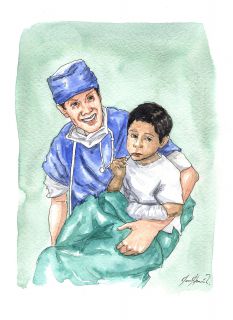

What is the health level in Peru?
Health in Peru
What characterize the access to health of Peruvian people is the deep inequality that exists. As in other spheres, cleavage between city/campaign, like littoral/rest of Peru, is blatant. In terms of numbers, life expectancy varies between 61 years in average in Huancavelica region (one of the poorest region in the country, located in the Andes) and 79 years in Lima. As well, child mortality goes from 20 for 1000 in the capital to more than 80 for 1000 in some provinces.
Chronic child undernutrition is a serious problem in rural areas, which almost affect 50% of children under 5 years old. A fundamental problem in some isolated areas of Peru is the health of the region’s environment and the lack of, for example, access to clean water and sanitation; in Andean regions, almost 50% of communities don’t have basic personal hygiene services. There also is this problem in several “young” districts in big towns like Lima, where kind of slums and salvage urbanization are completely forgotten by the government. The inequalities are particularly striking.
The same as Bolivia, one of the barrier to access to “official” medicine is the cultural gap that exists between the doctor with white coat and the sick person living in campaign. First of all, this one doesn’t speak Quechuan language, which limits a lot medical service quality they bring. Then, there is a conception of hygiene and medicine. The interculturality is subject to debate and continuous reforming for the Ministry of Health. For example, it is customary in the Andes to keep as a treasure the woman‘s placenta who just gave birth, because it is recognized to have a lot of virtues. Yet, often, the doctor didn’t accept to give back the placenta to the woman, as a hygienic measure, misunderstanding or just to impose his knowledge superiority (“we must put an end to these ridiculous superstitions”).
What is more, sexual health is very alarming in Peru. Mortality rate giving birth is one of the most important in the continent, according to an Amnesty International report. Abortion is illegal except in case of danger of death for the mother, clandestine abortions cost regularly life to a lot of young women. Yet, without an appropriate sexual education (education excessively religious and/or geographical isolation that create a worrying misinformation), the only solution is clandestine abortion or continuing the adolescent pregnancy. Those girls-mothers enter in a vicious cycle of poverty (they must work and take care to her baby at 15 years-old) where access to health is even more limited, for her and for her child.
Access to a social security is actually growing. Since the SIS creation (Seguro Integral de Salud, in English Comprehensive Health Insurance), the free access to basic medical services is accessible to many people, only with their identity card. The other public institution, relatively accessible, is Essalud, where every person working with an engagement is automatically affiliated. Even if it doesn’t resolve problems of personal availability, material (even more in rural areas), that illegal work (without engagement) limits its utilization, and that it doesn’t cover every aspect of the Peruvian health, those social security’s and public attention’s institutions represent an important progress.



